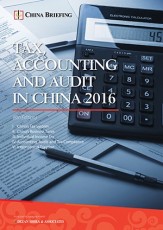Navigating Cross Border e-Commerce Regulations in China’s Pet Food Industry
By Weining Hu
 On April 8, 2016, Chinese authorities released an updated “positive list” for goods imported through cross border e-commerce (CBEC). Pet food, specifically dog food and cat food, are included on the list for the first time. This new regulatory update presents a substantial e-commerce opportunity for foreign pet food companies, as pet food can now be imported more easily via one of China’s 13 free trade zones or sold directly on business-to-consumer (B2C) or consumer-to-consumer (C2C) e-commerce platforms such as Tmall and JD.com. However, uncertainties and risks accompany these new opportunities, as new integrated tax policies for CBEC and the pre-existing “negative list” exert impacts on foreign investment.
On April 8, 2016, Chinese authorities released an updated “positive list” for goods imported through cross border e-commerce (CBEC). Pet food, specifically dog food and cat food, are included on the list for the first time. This new regulatory update presents a substantial e-commerce opportunity for foreign pet food companies, as pet food can now be imported more easily via one of China’s 13 free trade zones or sold directly on business-to-consumer (B2C) or consumer-to-consumer (C2C) e-commerce platforms such as Tmall and JD.com. However, uncertainties and risks accompany these new opportunities, as new integrated tax policies for CBEC and the pre-existing “negative list” exert impacts on foreign investment.
Opportunities for foreign brands
Since global food and drink conglomerates Mars, Inc. and Nestle S.A. attained sweeping success in China in the early 2000s, numerous market research analyses have projected enormous growth momentum in China’s pet food industry. Their confidence in China’s pet food sector is fundamentally based on the reality that around 75 percent of pet owners in China still do not feed their animals with commercial pet food, as estimated by Euromonitor. However, the use of commercial pet food is expected to become more widespread going forward, with GfK projecting online pet food sales growth in China to reach 43 percent for 2016.
In addition to the promising growth potential in the pet food industry, the growing food safety concerns among Chinese citizens encourages more and more middle and upper class pet owners to choose reliable foreign-branded pet food over domestic options. In recent years, a sequence of food safety incidents associated with Chinese food manufacturers have weakened the nation’s trust in national brands, such as when tainted Chinese-made pet treats killed over 1,000 dogs in 2007, causing the US Food and Drug Administration to recall a massive amount of pet food. The most prominent food safety scandal occurred in 2008, when the sale of tainted milk powder led to more than 300,000 infants being harmed, leaving China’s central government embarrassed amid severe domestic and international reprimands over its regulatory deficiencies.
![]() RELATED: Pre-Investment and Entry Strategy Advisory from Dezan Shira & Associates
RELATED: Pre-Investment and Entry Strategy Advisory from Dezan Shira & Associates
Tax treatment of pet food imported through CBEC
Due to uncertainties brought by the new integrated tax policies for CBEC, however, and counteractions hidden in the “negative list”, foreign investors are not necessarily guaranteed immediate success. As new integrated tax policies for CBEC means that the overall tax burden on consumers will exceed 10 percent, the price of imported pet food products will be significantly higher.
For example, if an online buyer paid RMB 202.26 (US$30) for a popular US branded natural dry adult dog food before the new adjustment, the tax would be waived by Customs because it amounted to less than RMB 50 (202.26 x 10% = 20.226). After the new adjustment, the same item is subject to a tax rate of 9.1 percent (0% [tariff for pet food] + 13% [VAT for pet food] x 70% = 9.1%). A further RMB 18 (RMB 202.26 x 9.1% = RMB 18.40566) would therefore be added to the original retail price after the adjustment.
In the short term, e-commerce platforms have been absorbing the price of the integrated tax for online buyers as a sales promotion to win greater market share. However, in the long run, integrated tax will eventually be passed onto online buyers. Consumers who prefer to enjoy low tax benefits might turn away from pricier overseas products, and instead choose from the existing foreign brands in China’s sales market. Though new investors may lose connections with that customer segment, licensed foreign pet food manufacturers will continue to benefit from sales growth due to well-established brand awareness, competitive price advantages, and low cost and speedy delivery.
Regulatory uncertainty
While the new “positive list” includes pet food, the “negative list” excludes certain animal feeds, such as meat meal, bone meal, fish meal, whey powder, blood meal, animal-derived medicines, and other unspecified feeds. Under such a contradictory situation, customs clearing will prioritize the “negative list,” according to China’s Inspection and Quarantine Bureau. Inclusion of pet food on the “positive list” seems to be good news for foreign investment at first glance, but when it comes to the implementation level, further legal due diligence is essential for any new market entrant.
In general, both licensed foreign pet food manufacturers and new foreign pet food companies will encounter different types of barriers in the process of achieving sales growth. Nonetheless, new regulatory changes open an e-commerce channel for more foreign investment to enter China’s pet food market. With the increasingly diversified demands of China’s pet owners, foreign brands specializing in different pet food products have the chance to establish their respective market niches when navigating the choppy waters of China’s cross border e-commerce.
|
Asia Briefing Ltd. is a subsidiary of Dezan Shira & Associates. Dezan Shira is a specialist foreign direct investment practice, providing corporate establishment, business advisory, tax advisory and compliance, accounting, payroll, due diligence and financial review services to multinationals investing in China, Hong Kong, India, Vietnam, Singapore and the rest of ASEAN. For further information, please email china@dezshira.com or visit www.dezshira.com. Stay up to date with the latest business and investment trends in Asia by subscribing to our complimentary update service featuring news, commentary and regulatory insight.
|

 Selling, Sourcing and E-Commerce in China 2016 (First Edition)
Selling, Sourcing and E-Commerce in China 2016 (First Edition)
This guide, produced in collaboration with the experts at Dezan Shira & Associates, provides a comprehensive analysis of all these aspects of commerce in China. It discusses how foreign companies can best go about sourcing products from China; how foreign retailers can set up operations on the ground to sell directly to the country’s massive consumer class; and finally details how foreign enterprises can access China’s lucrative yet ostensibly complex e-commerce market.
 China Investment Roadmap: the Food & Beverage Industry
China Investment Roadmap: the Food & Beverage Industry
In this edition of China Briefing, we examine two areas of Chinese food regulations most pertinent for foreign investors today – licensing and certification, and food safety standards. Both have undergone significant change in recent years, altering the way in which foreign companies must engage with the food & beverage industry, and must be thoroughly understood prior to market entry.
 Tax, Accounting, and Audit in China 2016
Tax, Accounting, and Audit in China 2016
This edition of Tax, Accounting, and Audit in China, updated for 2016, offers a comprehensive overview of the major taxes that foreign investors are likely to encounter when establishing or operating a business in China, as well as other tax-relevant obligations. This concise, detailed, yet pragmatic guide is ideal for CFOs, compliance officers and heads of accounting who must navigate the complex tax and accounting landscape in China in order to effectively manage and strategically plan their China-based operations.
- Previous Article China-Mongolia Relations: Challenges and Opportunities
- Next Article China in 2017 – Increasing Trade Alliances With Eurasia



























